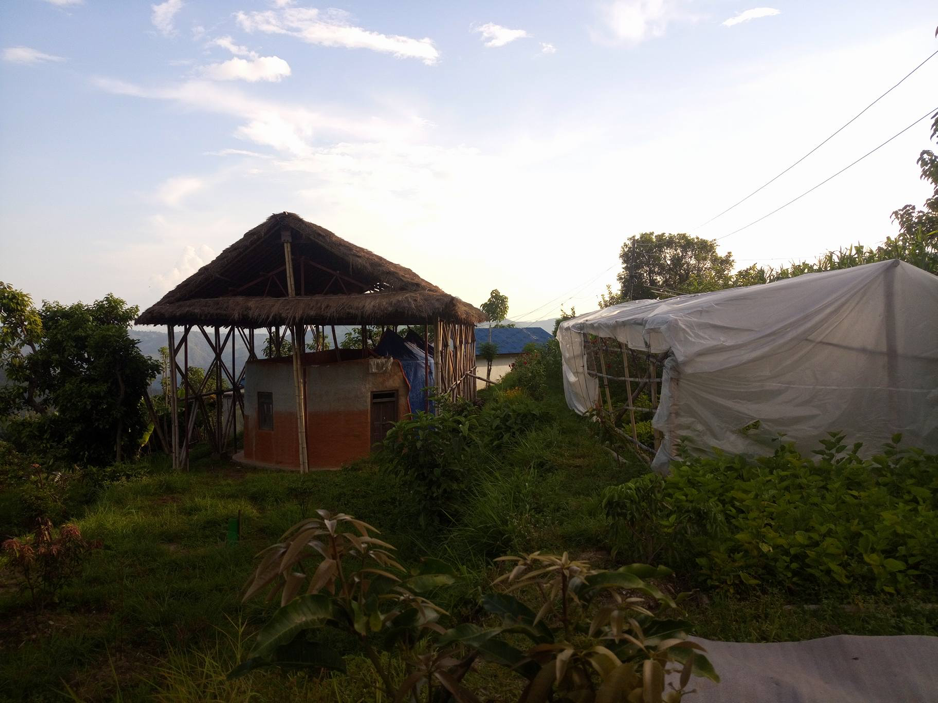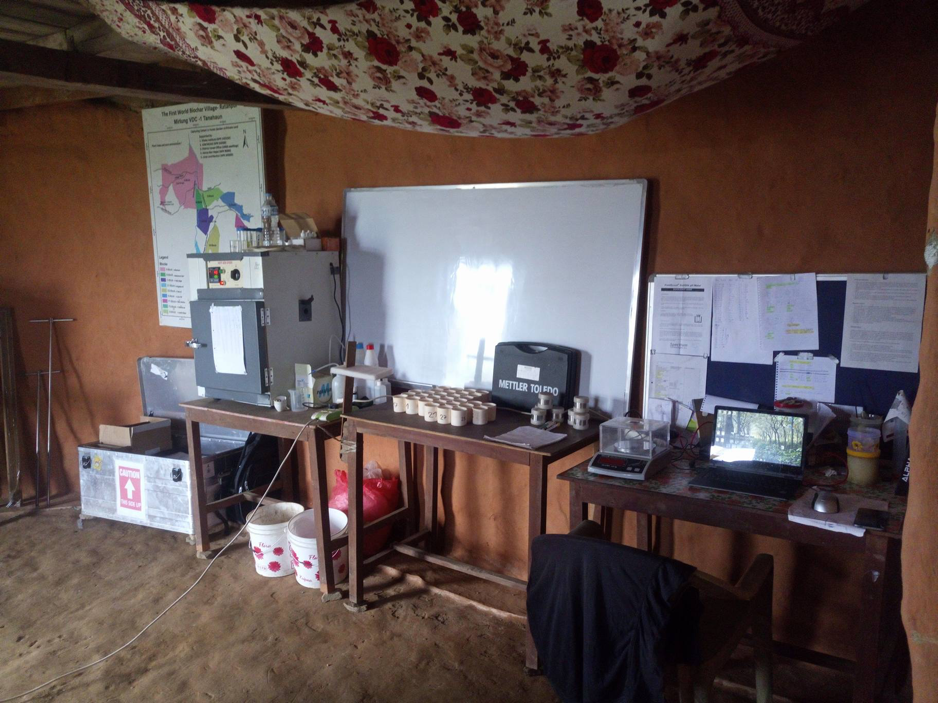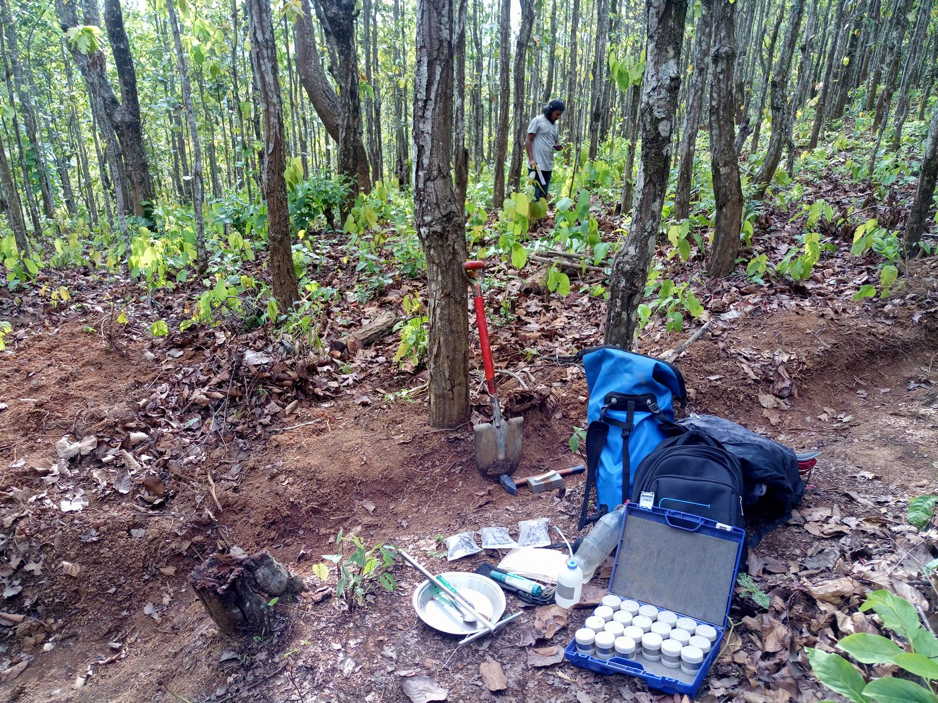Ithaka’s New Field Laboratory for Soil Analytics
How much carbon is currently stored in the soil of a cultivated terrace in the hills of Nepal? How much additional soil carbon would be added by planting a forest garden store during the next several years? Does the addition of organic biochar based fertilizers further improve the soil quality? Are the carbon fluxes of forest gardens comparable to natural forests? - Answers to these questions will soon be documented and shared by Ithaka, their international partners and contributing students using the newly established field laboratory in Ratanpur, Tanahun, Nepal.
The field-laboratory is set up in a double roundhouse that was built after the devastating earthquake of 2015 in the centre of the village. The specific type of construction, utilizing earthbags and clay as components of the walls and bamboo and thatch grass for the construction of a free-standing roof (not attached to the building) is not only representing a sustainable way of building with local materials, it is also one of the country’s leading example for an earthquake resistant structure.

Figure 1: Ithaka double round house where the laboratory and conference roof terrace are situated.
Utilising appropriate and robust analytical methods and methodologies this field station is equipped to conduct a 12-parameter on site soil analysis comprising bulk density, gravel fraction, soil organic matter (30/60/90cm), soil organic carbon, water content, soil water-holding capacity and porosity, in-situ and ex-situ pH, soil redox potential, electrical conductivity / salinity and temperature.

Figure 2: Set-up of field laboratory for soil and plant analysis in Ratanpur.
Further gear and tools are available to conduct additional experiments and field trails.
Among the currently ongoing analytical activities are:
- Soil organic carbon and fertility mapping
- Growth rates of Cinnamon and Kimbu trees being subject to different treatments
- Degradation- and migration- rates of C13 isotopic marked biochar in agroforestry systems (in cooperation with the University of Zürich)
- Effects of lacto-fermented biochar as base for organic fertilizers on oxidised soils and tree growth rate
- Designing of biochar enriched growing substrates for nursery use
To ensure a continual operation of drying- and ignition ovens, scales, meters and computer in the face of the unreliable grid power of the rural region, the field station was equipped with a strong battery backup and will soon be generating parts of its energy by attached solar panels.

Figure 3: Soil mapping in a newly established forest garden in Ratanpur.

